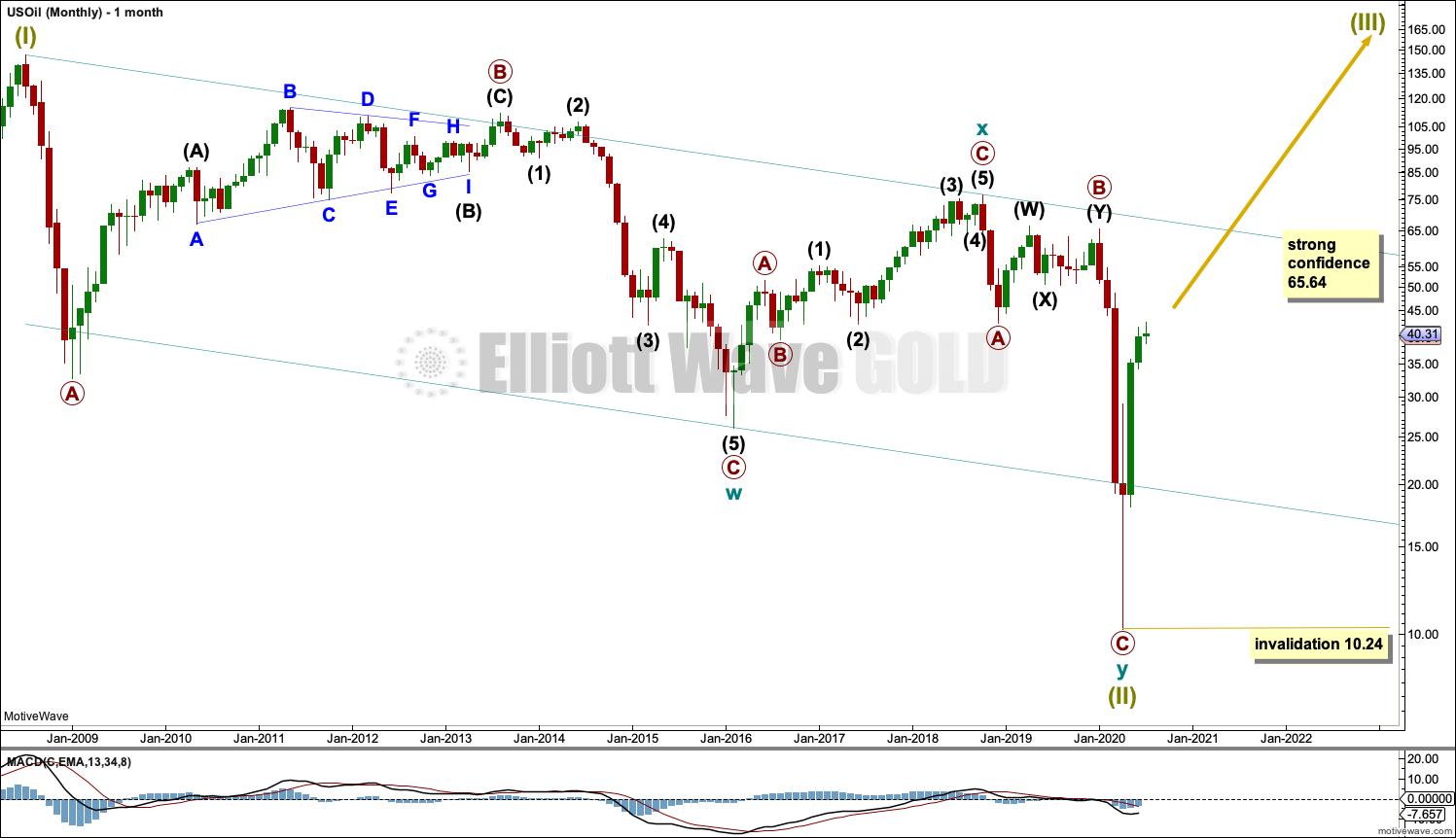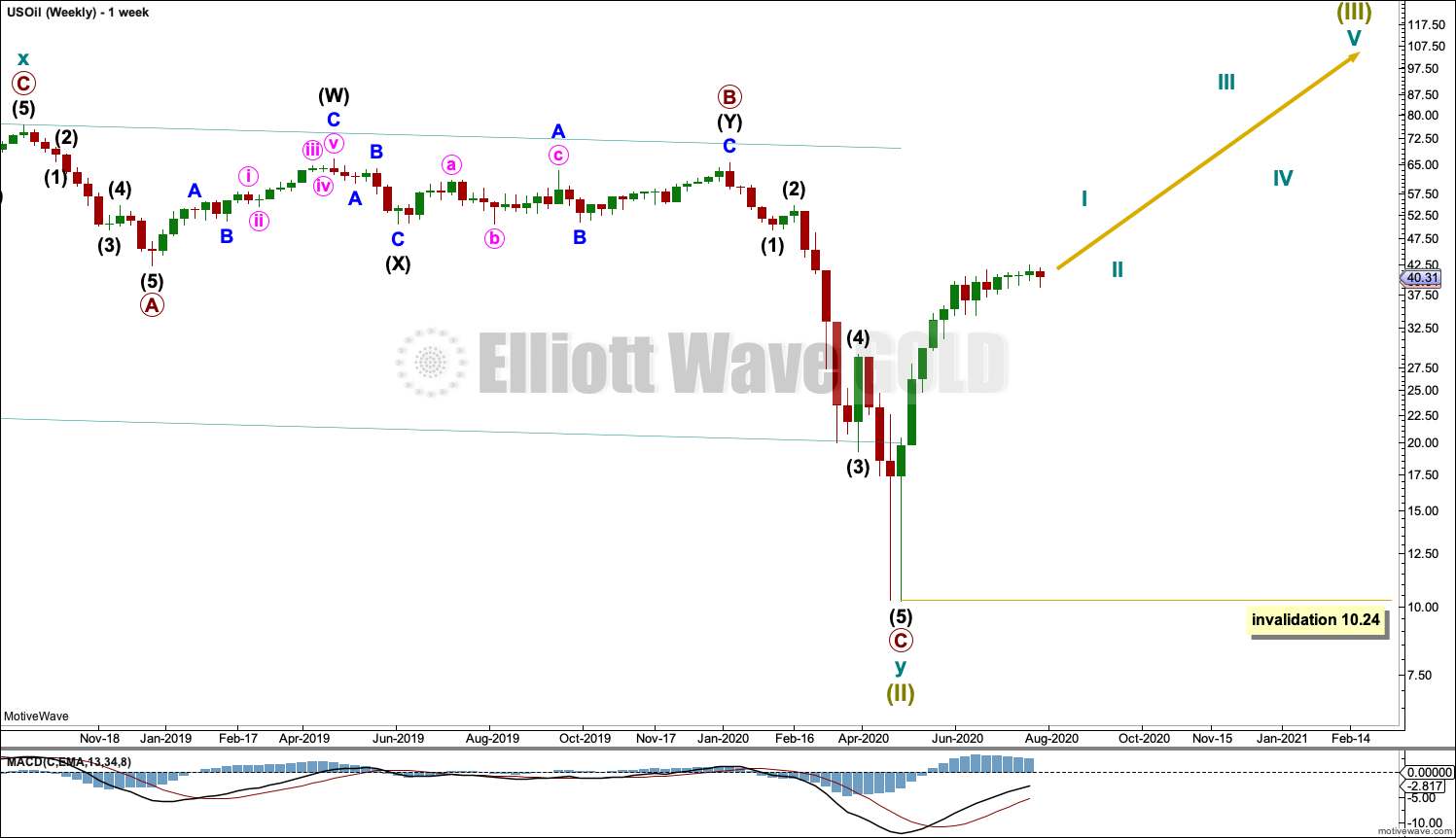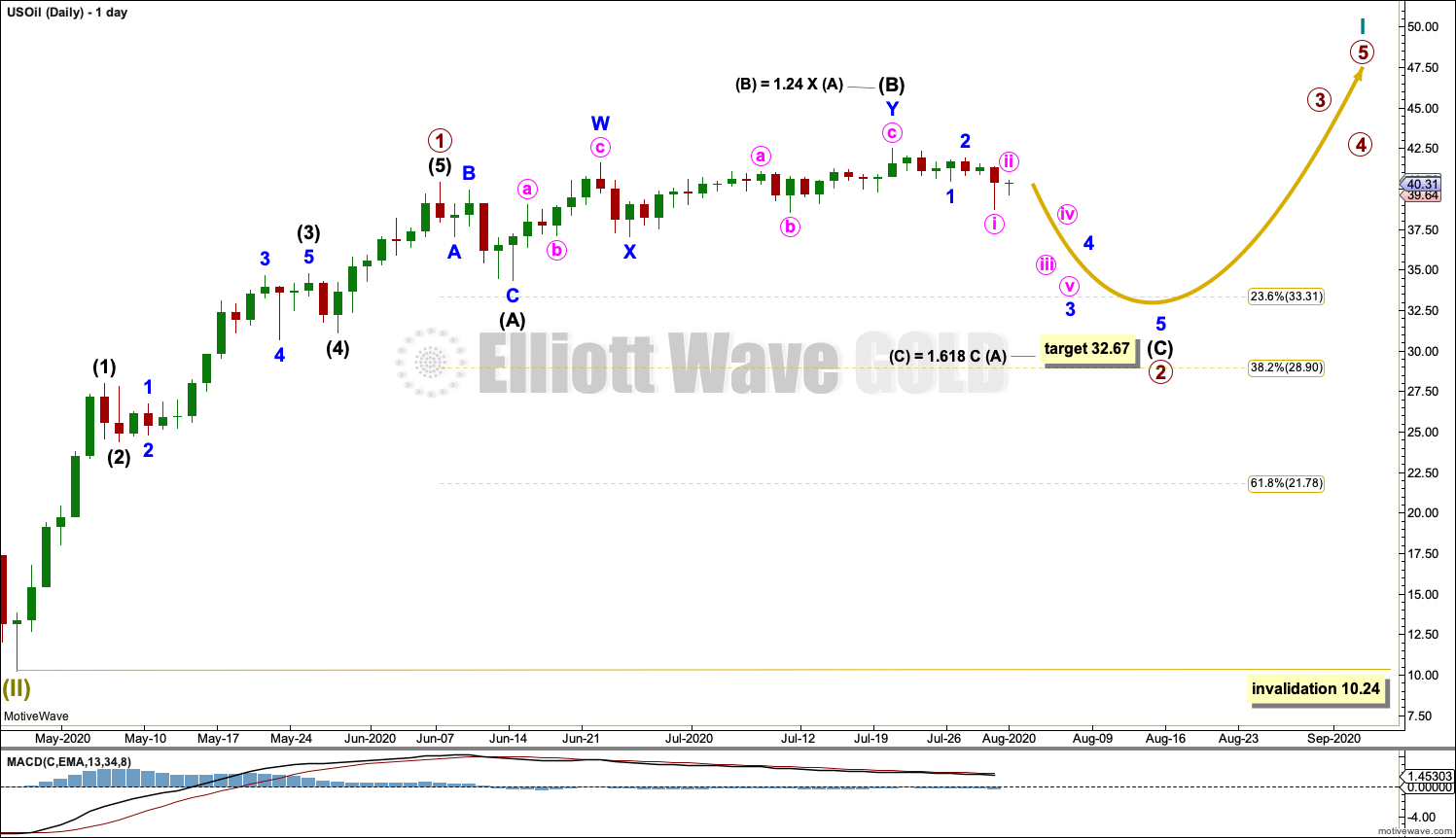US OIL: Elliott Wave and Technical Analysis | Charts – July 31, 2020
A downwards week only fits the main daily Elliott wave count, which is the only remaining short-term wave count this week. The two alternates are now invalidated.
Summary: Oil may have found a major sustainable low.
A slow rounded top may have formed. A pullback may now begin to gather strength.
For the mid term, a multi-week pullback may end about 32.67. It is possible the pullback may be deeper than this though; the first major correction within a new trend for Oil tends to be very deep.
When this pullback may be complete, then an upwards trend should resume with increased strength.
ELLIOTT WAVE COUNT
MONTHLY CHART
The basic Elliott wave structure is five steps forward and three steps back. This Elliott wave count expects that US Oil has completed a three steps back pattern, which began in July 2008. The Elliott wave count expects that the bear market for US Oil may now be over.
A channel is drawn about Super Cycle wave (II): draw the first trend line from the start of cycle wave w to the end of cycle wave x, then place a parallel copy on the end of cycle wave w. Price has bounced up off the channel. This trend line is breached, which is a typical look for the end of a movement for a commodity.
The upper edge of the channel may provide resistance.
Following five waves up and three steps back should be another five steps up; this is labelled Super Cycle wave (III), which may only have just begun. Super Cycle wave (III) may last a generation and must make a new high above the end of Super Cycle wave (I) at 146.73.
Super Cycle wave (III) may only subdivide as a five wave impulse. New trends for Oil usually start out very slowly with short first waves and deep time consuming second wave corrections. Basing action over a few years may now have begun.
WEEKLY CHART
Super Cycle wave (III) must subdivide as an impulse. Cycle wave I within the impulse may now be unfolding higher. Cycle wave II may not move beyond the start of cycle wave I below 10.24.
DAILY CHART
Primary wave 1 within an impulse for cycle wave I may now be complete.
Primary wave 2 may be unfolding as an expanded flat correction. Intermediate wave (A) within the flat may be a complete zigzag. Intermediate wave (B) may have completed as a double zigzag. It would be 1.24 times the length of intermediate wave (A), which is within the common range for intermediate wave (B) within a flat from 1 to 1.38 times the length of intermediate wave (A), giving a range from 40.44 to 42.75.
Intermediate wave (C) may only subdivide as a five wave motive structure, most likely an impulse. If the target is wrong, then it may not be low enough.
A target is calculated for primary wave 2 that expects a common Fibonacci ratio between intermediate waves (A) and (C).
Primary wave 2 may not move beyond the start of primary wave 1 below 10.24.
ALTERNATE DAILY CHART
Last week’s alternate chart considered primary wave 1 continuing higher with an ending contracting diagonal for intermediate wave (5) within it. The diagonal is no longer valid; minor wave 4 would be now longer than minor wave 2, breaching the rule for a fourth wave within a contracting diagonal. The wave count is this week discarded.
TECHNICAL ANALYSIS
WEEKLY CHART
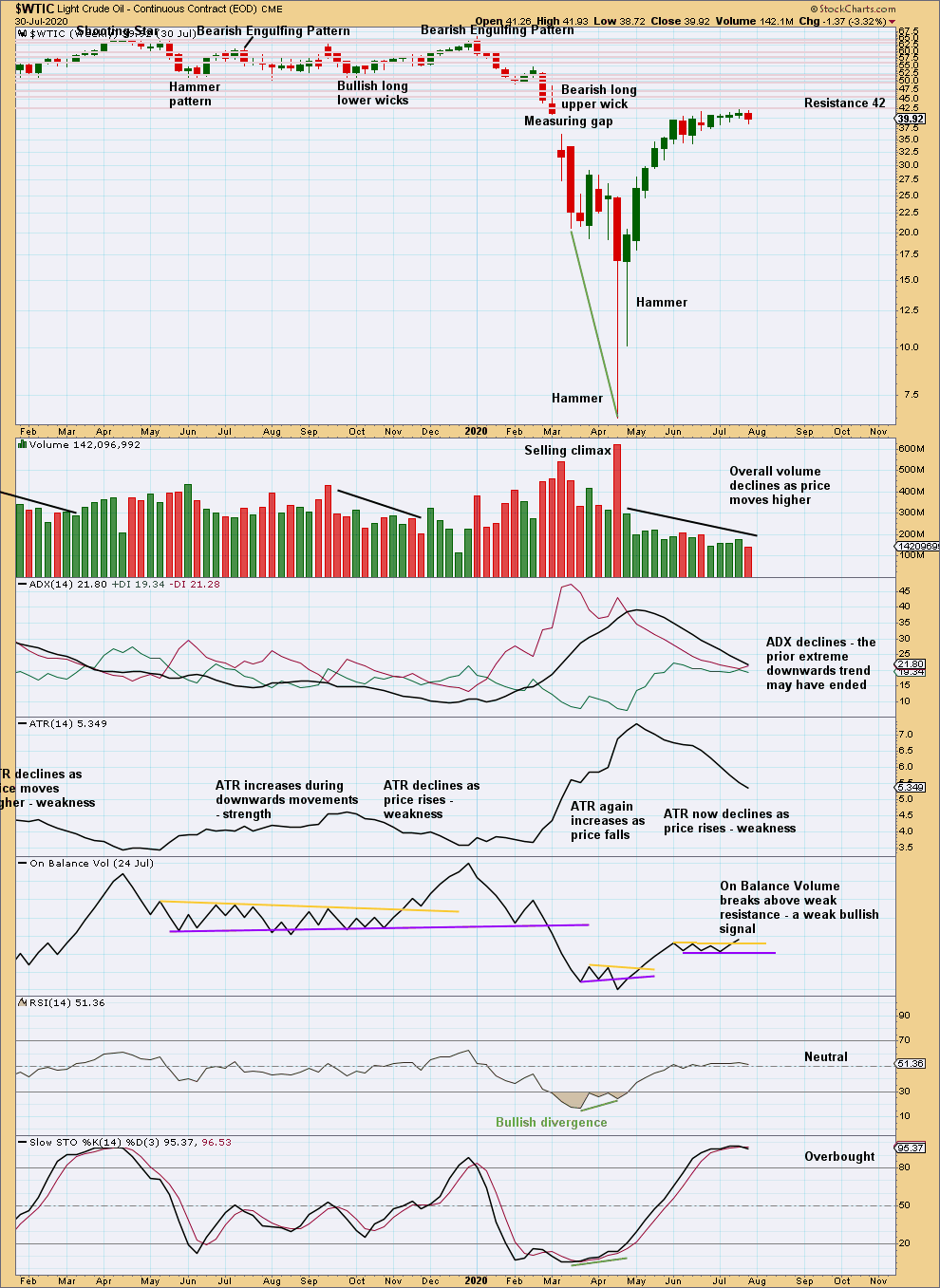
Click chart to enlarge. Chart courtesy of StockCharts.com.
Resistance about 42 so far is holding. A pullback about here would be a reasonable expectation.
DAILY CHART
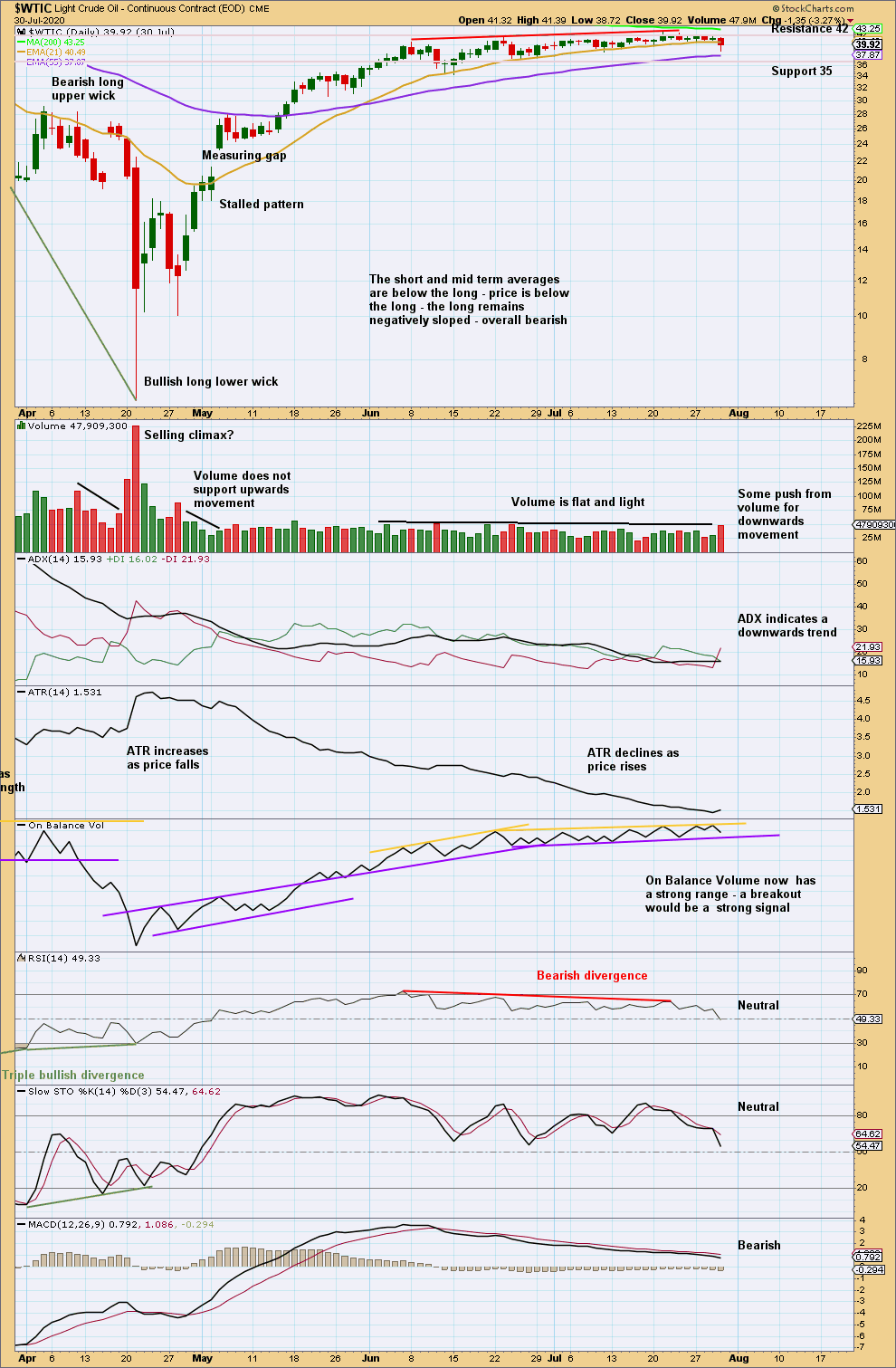
Click chart to enlarge. Chart courtesy of StockCharts.com.
Bearish divergence with price and RSI is clear. The probability of a multi-week pullback remains high.
A rounded top looks to have formed. Volume is pushing price lower on Friday. Watch the trend lines for On Balance Volume carefully for a signal next week.
Published @ 06:35 p.m. ET.
—
Careful risk management protects your trading account(s).
Follow my two Golden Rules:
1. Always trade with stops.
2. Risk only 1-5% of equity on any one trade.
—
New updates to this analysis are in bold.

